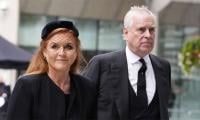Part V - India through the years
The mid-1970s presented interesting – or rather depressing – times for India. It was interesting because the country had won a war and Indira Gandhi was comfortably in the saddle. It was depressing due to the increasingly authoritarian behaviour that she displayed and went so far as to declare a state of emergency in the country.
Before discussing the aftermath of the national emergency in India, it seems pertinent to discuss two personalities that Indira helped bring to power to serve her purpose. The first was Justice AN Ray who had given a dissenting opinion in the ‘Keshavananda Bharti’ case which went against the wishes of then prime minister Indira Gandhi by propounding the doctrine of the basic constitutional structure. Justice AN Ray was a relatively junior judge of the Indian Supreme Court, but his dissenting note impressed the prime minister who in 1973 advised her loyal president VV Giri to appoint Justice Ray as chief justice, superseding three senior judges.
This was unprecedented in Indian legal history, and most legal experts considered it a blatant attack on the independence of the judiciary. But Indira did not take into account widespread protests by the bar association of India and other legal groups across the country. As CJ, Justice AN Ray remained obedient to the prime minister who was about to launch her authoritarian programme. But before that, she further consolidated her position by adding another loyal head of state, Fakhruddin Ali Ahmed – a lawyer and politician from Assam – to her team.
Fakhruddin Ali Ahmed remained a regional leader of the Congress till 1966 when Indira, who was looking for new allies at the centre, brought him to New Delhi as the union minister of education. Perhaps it is not out of place to mention that he was the fourth Muslim education minister of India after Maulana Azad, Humayun Kabir, and Mahomedali Currim Chagla, commonly known as MC Chagla. The fifth Muslim to hold the education ministry was Sayid Nurul Hasan from 1972 to 1977. (He was the Indian ambassador to the Soviet Union in the 1980s when I was studying in Moscow, and was a fine scholarly man.)
In 1974, Indira selected Fakhruddin Ali Ahmed to contest the presidential election which he comfortably won. Now Indira had a pliant chief justice and an even more compliant president in office, and that was an eventful period in India. Multiple movements were launched against Indira: the Navnirman Movement and Morarji Desai’s hunger strike in Gujarat, Jayaprakash Narayan’s Bihar Movement also known as JP Movement which he transformed into the ‘Sampoorna Kranti’ or the Total Revolution Movement, and ‘Janata Morcha’ which was aimed at dislodging Congress from the Gujarat government.
All these protests brought myriad challenges for Indira Gandhi. JP Narayan and Morarji Desai formed an alliance called ‘Janata Morcha’ in early 1975, comprising Congress (O), Jana Sangh, Socialist Party and others. When Janata Morcha formed its government in Gujarat in June 1975, the same week the Allahabad High Court held Indira guilty of electoral malpractices and invalidated her 1971 election victory, barring her from elective office for six years. JP Narayan declared to hold a rally in Delhi on June 25, prompting Indira to impose an emergency.
Just as the previous president had no objection in appointing a junior judge as chief justice, then president Fakhruddin Ali Ahmed approved Indira’s decision to impose an emergency. Then he also approved several constitutional amendments to restrict civil liberties. Right after the emergency was imposed, Indira suspended civil liberties and introduced a mandatory birth-control programme; she also announced her 20-point agenda to liquidate the debts of landless labourers and small farmers. Later, she detained the entire opposition, censored newspapers and banned all forms of political protests. The information and broadcast minister, IK Gujral, also had to quit but he did not leave the Congress and later on became the Indian ambassador to the Soviet Union. On July 4, the government banned four parties: Ananda Marg, RSS, the Naxalites, and the Jamaat-e-Islami Hind.
In August, Indira Gandhi embarked on a journey of a rapid constitutional overhaul that eventually led to her downfall within two years. The 39th amendment to the Indian constitution was introduced on August 10, 1975. It placed the election of president, vice president, prime minister, and the Lok Sabha speaker beyond the scrutiny of the courts, irrespective of the electoral malpractice, and that too retrospectively. The Indian Supreme Court was supposed to hear the case regarding Indira’s disqualification on the grounds of corrupt electoral practices. The defeated candidate, Raj Narayan, had challenged her election.
Indira’s removal from the Lok Sabha was imminent when the emergency was declared and she began her rule by decree. After the 39th amendment cemented her position and prevented her removal from Indian politics, her government suspended seven freedoms that the constitution of India guaranteed in the next couple of months. The government also extended the life of the Lok Sabha by one year, allowing Indira to rule for another year without facing the people.
She then introduced three more amendments. The 41st amendment prohibited any case – civil or criminal – being filed against the president, vice president, prime minister, or even governors, not only during their terms of office, but forever. This meant that if somebody was a governor for only a day, they acquired immunity from legal proceedings for life. Perhaps the most devastating was the 42nd amendment that extended the initial time duration of state emergency from six months to one year; but to sugar-coat, it also declared India a socialist and secular republic. It removed all restrictions regarding the amendment powers of the Indian parliament. Hence, nobody could contest any amendment in any court of law in India. Later, this provision was removed by the famous Minerva case that reinforced the doctrine of the basic structure of the constitution.
During all these attacks on the constitution and the imprisoning of over 50,000 people, Justice AN Ray proved to be the right-hand man of Indira and made himself amenable to her influence. The famous Habeas Corpus case was a major decision during Ray’s tenure as chief justice. In ‘Jabalpur v Shukla’ – popularly known as the Habeas Corpus case – in April 1976, Ray led four of the five senior most judges to strike a severe blow to the rights of citizens enshrined in the constitution.
The word habeas corpus means ‘you shall have the body’ and it is a recourse in law where a person can report an unlawful detention to a court. The Indian Supreme Court declared that “no person has any locus standi to move any writ petition before a high court for habeas corpus”. Thus nobody could challenge the legality of an order of detention; nine high courts upheld this right but not the Supreme Court.
Interestingly, all four judges who supported the government became the chief justices of the Indian Supreme Court barring just one dissenter, Justice HR Khanna. He remained steadfast in those trying times though he was next in line to become chief justice. He disagreed with the majority and ultimately Indira Gandhi deprived him of his right to lead the superior court. He resigned when his junior, Justice Hameedullah Beg, superseded him to become the chief justice for just one year before he retired. Through this decision, the Supreme Court of India in effect ordered the Indian high courts to shut their doors on the people. The lone dissenting voice of Justice Khanna to this day resonates in the halls of the Indian judiciary.
To be continued
Email: mnazir1964@yahoo.co.uk
Twitter: @NaazirMahmood
The writer holds a PhD from the University of Birmingham, UK.
-
 Gaten Matarazzo On Unbreakable Bonds Of 'Stranger Things'
Gaten Matarazzo On Unbreakable Bonds Of 'Stranger Things' -
 Beyonce, Jay-Z's Daughter Blue Ivy Carter's Massive Fortune Taking Shape At 14?
Beyonce, Jay-Z's Daughter Blue Ivy Carter's Massive Fortune Taking Shape At 14? -
 Meghan Markle Fulfills Fan Wish As She Joins Viral 2106 Trend
Meghan Markle Fulfills Fan Wish As She Joins Viral 2106 Trend -
 Selena Gomez Proves Point With New Makeup-free Selfie On Social Media
Selena Gomez Proves Point With New Makeup-free Selfie On Social Media -
 John Mellencamp Shares Heartbreaking Side Effect Of Teddi's Cancer
John Mellencamp Shares Heartbreaking Side Effect Of Teddi's Cancer -
 Kate Middleton 'overjoyed' Over THIS News About Meghan Markle, Prince Harry
Kate Middleton 'overjoyed' Over THIS News About Meghan Markle, Prince Harry -
 'Harry Potter' Star Brendan Gleeson Reluctantly Addresses JK Rowling's Trans Views
'Harry Potter' Star Brendan Gleeson Reluctantly Addresses JK Rowling's Trans Views -
 Priscilla Presley Reveals The Path Elvis Would Have Taken If He Were Still Alive
Priscilla Presley Reveals The Path Elvis Would Have Taken If He Were Still Alive -
 Kianna Underwood's Death Marks Fourth Nickelodeon-related Loss In Weeks, 9th Since 2018
Kianna Underwood's Death Marks Fourth Nickelodeon-related Loss In Weeks, 9th Since 2018 -
 Hayden Christensen Makes Most Funny 'Star Wars' Confession Yet
Hayden Christensen Makes Most Funny 'Star Wars' Confession Yet -
 Subway Surfers City: Release Date, Exciting New Modes, And All The Big Changes Coming In 2026
Subway Surfers City: Release Date, Exciting New Modes, And All The Big Changes Coming In 2026 -
 Tom Ford's Brutal Behaviour With Ashton Kutcher Finally Exposed
Tom Ford's Brutal Behaviour With Ashton Kutcher Finally Exposed -
 Gaten Matarazzo Heaps Praise For Duffer Brothers
Gaten Matarazzo Heaps Praise For Duffer Brothers -
 Millions Of Bluetooth Earbuds At Risk Due To Google Fast Pair Flaw
Millions Of Bluetooth Earbuds At Risk Due To Google Fast Pair Flaw -
 Sarah Ferguson Believes 'royal Machine' Failed To Protect Her
Sarah Ferguson Believes 'royal Machine' Failed To Protect Her -
 'The Night Manager' Producer Proud To Guard Season Two Secret
'The Night Manager' Producer Proud To Guard Season Two Secret



